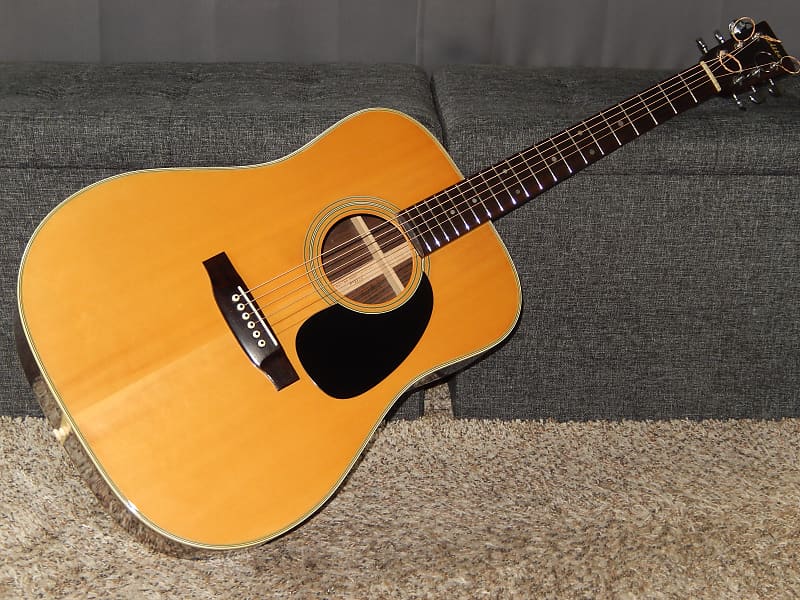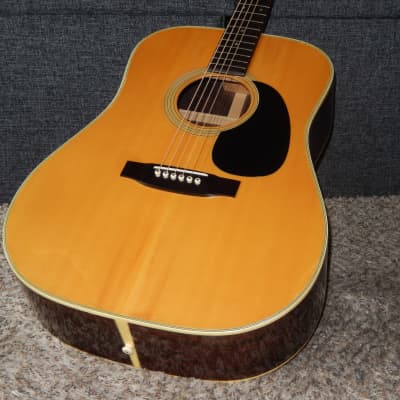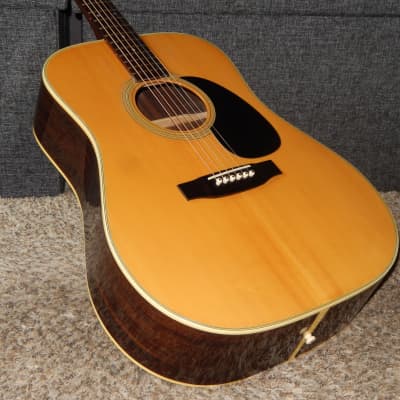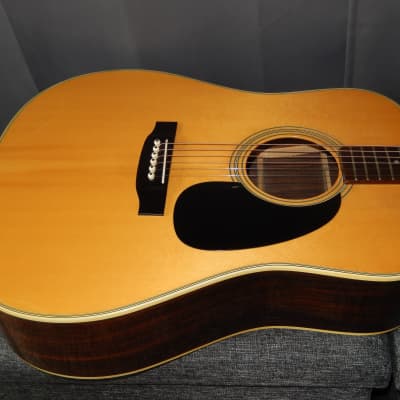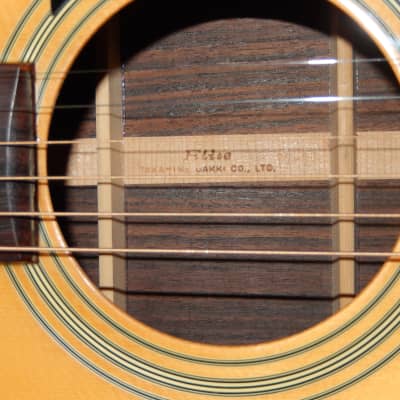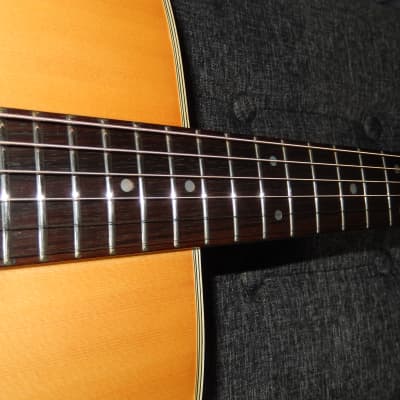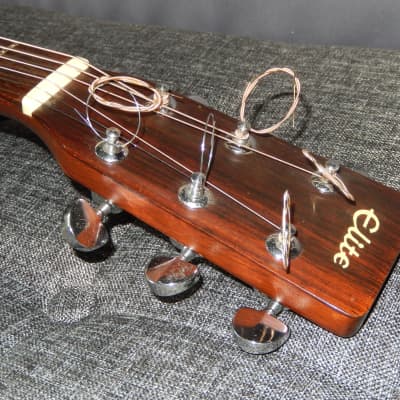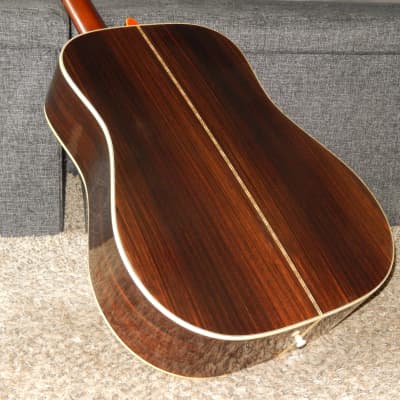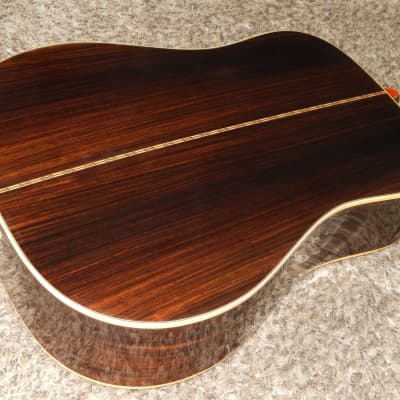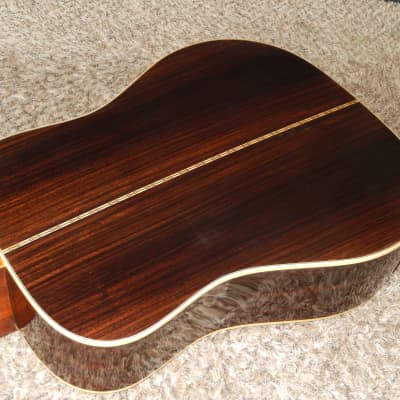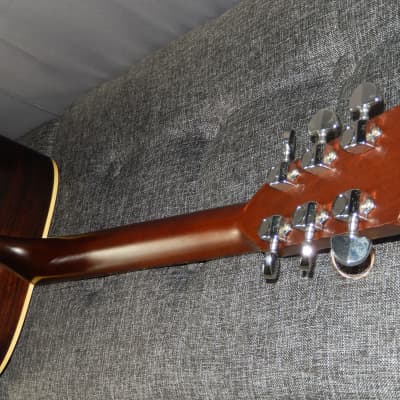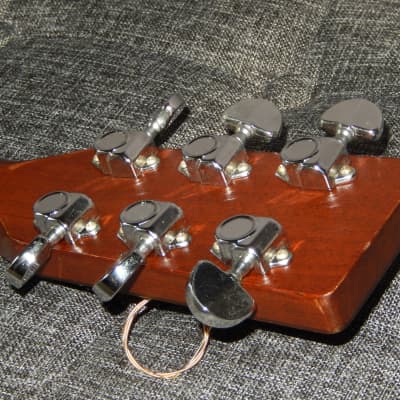Several hundred guitars I have sold in the past are presented at Facebook.com/Victors.Guitar.Library.
Takamine Elite TW30
The terrific guitar was made in 1978 being the one of lower end models within Takamine Elite acoustic guitar series. It is an “all plywood” body guitar.
Takamine started its Elite series sometime in late 1960s/early 1970s and ended it around 1978. While in early 1970s model TW30 had solid top, by mid 1970s it was “all plywood” model.
Yet this vintage TW30 sounds better than many “all solid woods” currently sold by Guitar Center.
It offers great volume and superb response. Its sound is moderately deep yet very rich. Basses are quite deep but also quite “clean”. Trebles are metallic but sweet at the same time. Individual notes are very well separated but hen chords and arpeggios are played guitar releases a good deal of overtones and harmonies, magnified by quite impressive sustain.
This guitar was priced 30 000 yen in 1978, when most solid top models were priced minimum 50 000 yen.
Despite few tiny marks within the finishes on its body, this guitar survived in “practically mint” condition. Its original tuners still look “close to new”. Its neck is straight, while its fingerboard and frets look “like never used”. With its quite low action it plays super easy.
Specifications:
Top: Spruce/ Martin style bracing with non-scalloped braces/ very thin coat of finish
Back & Sides: Rosewood/ urethane
Fingerboard: Rosewood
Neck: Nato
Scale 650 mm
Width at Nut: 42 mm
Its action is set to 2.50 mm under E6 and 2.00 mm under E1 with practically no extra room on the saddle
My posted for sale guitars are stored in climate-controlled vault already packed into shipping boxes, with loosen strings. Because the strings are loosened, they don’t pull the neck or soundboard, and the neck may relax (straighten more) and the soundboard flatten a bit, which may result with the string action being lower than my it was with my original settings and lead to buzzes and/or dead notes after guitar arrives to you. Such a change in neck curvature can also happen just because of vibrations during the shipment and/or temperature fluctuations. Therefore, you must be ready to make final action adjustment yourself and or have it done by professional. All that really needs to be done is the simple neck adjustment by using the truss rod (turning the truss rod counterclockwise will relief the neck and strings will move away from the frets).
THAT IS WHY TRUSS RODS ARE INSTALLED IN THE NECKS OF ACOUSTIC GUITARS!!!
This guitar will be shipped in brand new Yamaha soft shell case.
The key to understand value of vintage Japanese guitars is to acknowledge galloping price inflation (devaluation of Japanese yen) during 1960s & 1970s. This inflation slowed down in 1980s.
During 1960s and most of 1970s model numbers of Japanese guitars were strictly interconnected with their prices in Japanese yen. By early 1980s and during following decades model numbers were no longer strictly associated with their prices. Some Japanese guitar makers introduced model names instead of model numbers. Others were still using model numbers with addition of letters and/or other symbols.
It is then important to understand that two Yamaha GC10 guitars made 10 years apart are two instruments of totally different class. The same applies to any other Japanese maker/brand.
The logical way to estimate the true class of any given Japanese made instrument is to compare its price with the average annual salary of wage workers in Japanese private sectors. This salary was: 450 600 yen in 1965 - 825 900 yen in 1970 - 1 868 300 yen in 1975 - 2 689 000 yen in 1980 - 3 163 000 yen in 1985 - 3 761 000 yen in 1990 - 4 107 000 yen in 1995 - 4 082 000 yen in 2000.
Any guitar priced 100 000 yen in 1970 (labelled as No10 or No100) would be priced 200 000 yen in 1975 (relabeled to No20, No200 or 2000), 300 000 yen in 1977 (labelled as No3, No30 or 3000) and 500 000 yen by 1985 (labelled as No50 or 5000).
Starting in 1977 Masaru Kohno introduced his new models No40 priced 400 000 yen and No50 priced 500 000 yen. By early 1980s Kohno started using model names instead of numbers and was steadily raising their prices without changing model labeling. His very top model 50 became model “Special”, and a decade later it became model “Maestro”. Naturally, all other Japanese guitar makers were doing similar pricing (labelling) upgrades.
Knowing all of that, you can bet on that Masaru Kohno No50 made in 1982 is practically the same grade instrument as Kohno No20 made in 1972, or Kohno no 30 made in 1975.
In early 1970s the lowest Ryoji Matsuoka (all plywood) model was 10, followed by (solid top) models 15, 20, 25, 30, 40, 50, 60, 80 and (all solid woods) models 100 and 150. Models 50, 60 and 80 were made with non-solid figured Brazilian Rosewood (double) back and sides and top model 150 was the only one made with solid figured Brazilian Rosewood b/s.
In 1980 the lowest Matsuoka model was (all plywood) 20, followed by (solid top) models 30,40,50, 60 and all solid woods models 80,100,150 and 200. By 1990 the lowest Matsuoka model was M40 and the highest was M300. By 2010 the lowest Matsuoka model was M50 and the top model was M270.
You can bet that Ryoji Matsuoka model 50 from 1980 is of the same grade as model M100 from 2000, model 100 from 1980 is of the same grade as model M150 from 2000, model 150 from 1980 is of the same grade as M200 from 2000 and model 200 from 1980 is of the same grade as model M300 from 2000.
It is important to mention that if modern era luthiers are using 40+ years old woods to make an “all solid” wood classical guitar, its price is minimum $8000.
All vintage guitars made with Brazilian Rosewood are especially precious, including those made straight grain varieties and those with non-solid b/s.
Because response and tonal properties of Spruce soundboards are improving over time, long seasoned Spruces are far more precious than long seasoned Cedars.
It is not very difficult to find out what are current prices of such guitars made by world’s leading luthiers.
